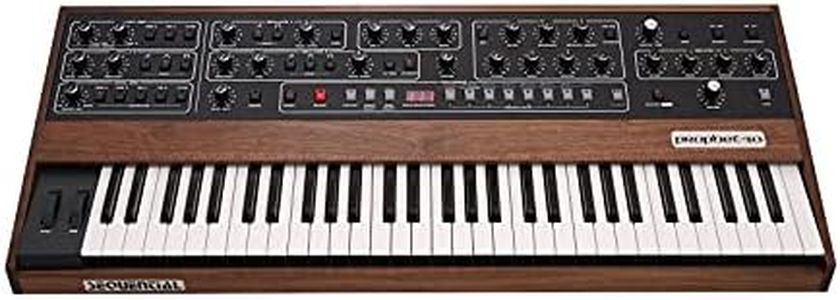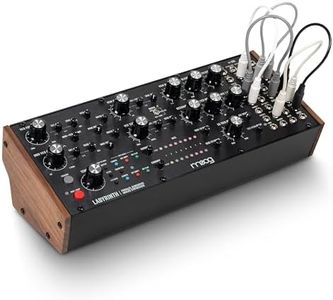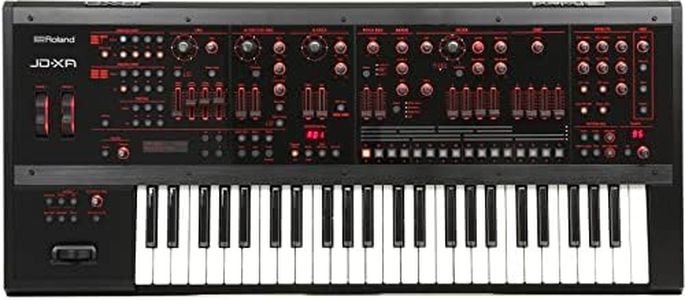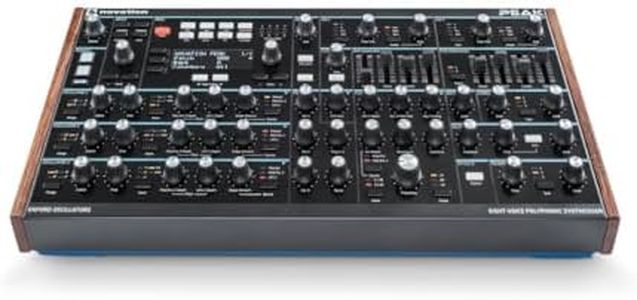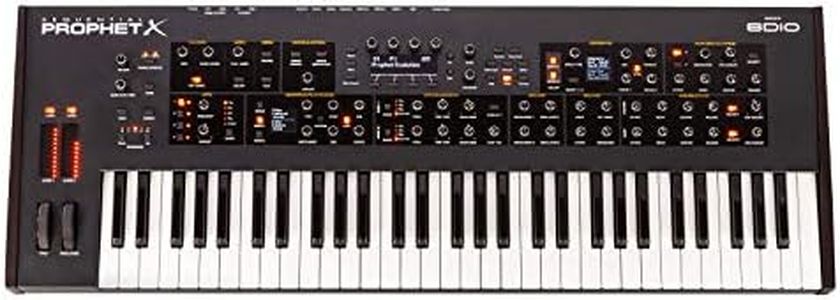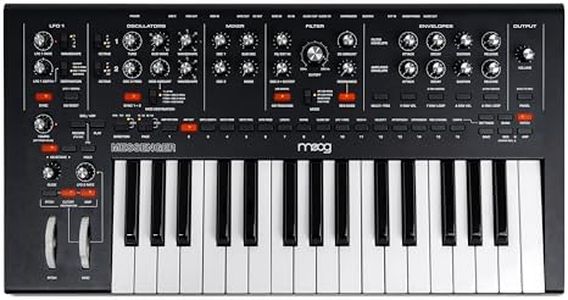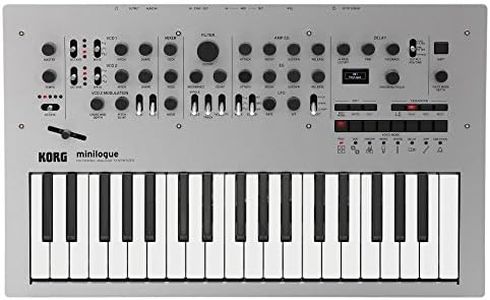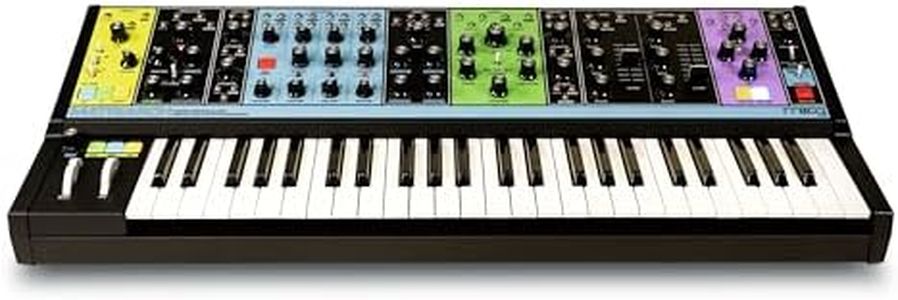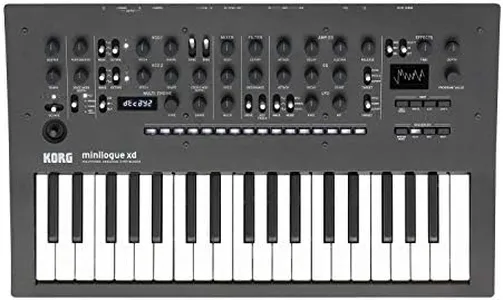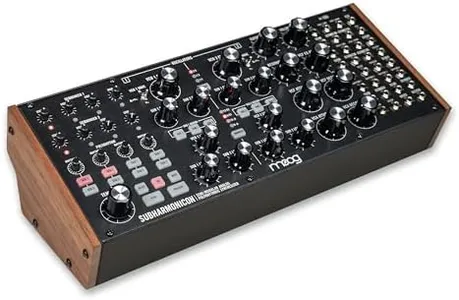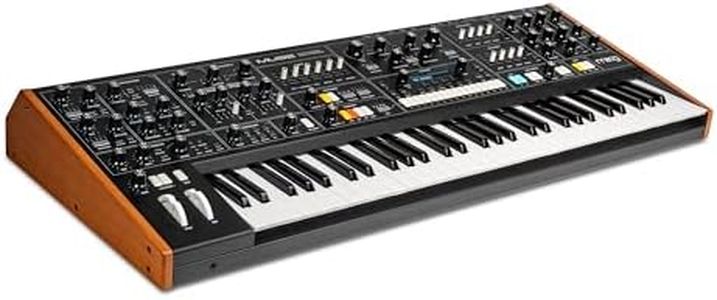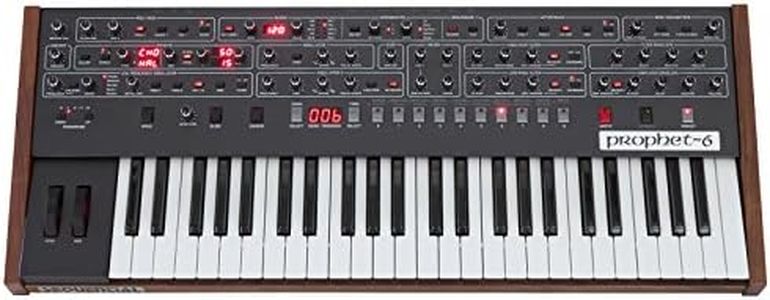10 Best Analog Synthesizers 2025 in the United States
Our technology thoroughly searches through the online shopping world, reviewing hundreds of sites. We then process and analyze this information, updating in real-time to bring you the latest top-rated products. This way, you always get the best and most current options available.

Our Top Picks
Winner
Sequential Prophet-10 61-key Analog Synthesizer
The Sequential Prophet-10 is a high-quality analog synthesizer designed for musicians who want rich, warm sounds with classic analog character. It offers 10-voice polyphony, which means you can play up to ten notes simultaneously, making it ideal for complex chords and layered sounds. The synth has two voltage-controlled oscillators (VCOs) per voice, providing a wide range of tones and textures. Its 4-pole lowpass filter shapes your sound by smoothly rolling off high frequencies, which is a key feature for creating that vintage analog warmth.
The 61-key semi-weighted keyboard with aftertouch adds expressive control, suitable for performance. Connectivity includes USB Type A, which is useful for integrating with modern setups. The instrument is quite large and heavy (over 40 pounds), so it’s best suited for studio use or stationary setups rather than frequent transport. The wooden casing and all-steel case give it a premium, durable feel.
The Prophet-10 is a professional-level synth with excellent sound and playability. It may be more than what beginners need and might be a considerable investment. It is ideal for those seeking a classic analog experience with plenty of polyphony and expressive control in a high-end instrument.
Dave Smith Instruments Prophet Rev2 16-Voice Polyphonic Analog Synthesizer
The Dave Smith Instruments Prophet Rev2 is a powerful analog synthesizer great for musicians looking for rich, versatile sounds with high polyphony. It offers 16 voices, meaning you can play many notes at once, which is ideal for complex chords and layered sounds. Each voice has two oscillators that generate the basic tones, giving you a wide range of sound possibilities. The synth features 2- and 4-pole resonant lowpass Curtis filters, which help shape the tone by cutting high frequencies smoothly and adding character, a signature of classic analog sounds.
It also includes a polyphonic step sequencer for creating repeating patterns, which is a handy tool for live performance and sound design. The onboard effects engine adds extra depth to your sounds without needing extra gear. Connectivity via USB makes it easy to integrate with computers and modern setups. The 61-key keyboard is comfortable and responsive, suitable for both beginners and experienced players.
The weight (over 26 pounds) and size might make it less portable if you plan to gig frequently. Also, while it has a deep sound design capability, the complexity might be a bit overwhelming for those new to synthesis. For anyone wanting a classic analog synth with modern features and excellent sound quality, the Prophet Rev2 remains a solid choice.
Novation Summit Two-Part 16-Voice 61-Key Polyphonic Synthesizer
Most important from
14 reviews
The Novation Summit is a powerful two-part, 16-voice polyphonic synthesizer that blends classic analog warmth with modern digital versatility. Each voice features three advanced oscillators capable of subtractive, wavetable, or FM synthesis, offering a wide palette of sounds. Its analogue multimode filter with selectable slopes per voice adds rich, dynamic tonal shaping. The 61-key semi-weighted keybed feels premium and expressive, with velocity sensitivity and aftertouch enhancing playability. You also get several onboard effects like distortion, chorus, delay, and reverb, which help shape your sound without external gear.
Connectivity is solid, with USB and MIDI ports that work well with computers and other instruments, plus stereo audio inputs for routing external sounds through the synth’s effects. The synth is fairly hefty and wide, which might be less ideal for portable use. While the interface is well designed, some users might find the depth of options a bit complex at first. This instrument suits musicians seeking a versatile, high-quality device capable of lush polyphonic textures and complex sound design, especially those who want both analog feel and digital flexibility in one unit.
Most important from
14 reviews
Buying Guide for the Best Analog Synthesizers
Choosing the right analog synthesizer can be a thrilling yet daunting task, especially with the variety of options available. Analog synthesizers are known for their warm, rich sounds and hands-on control, making them a favorite among musicians and producers. To find the best fit for you, it's important to understand the key specifications and how they align with your needs and preferences.FAQ
Most Popular Categories Right Now
